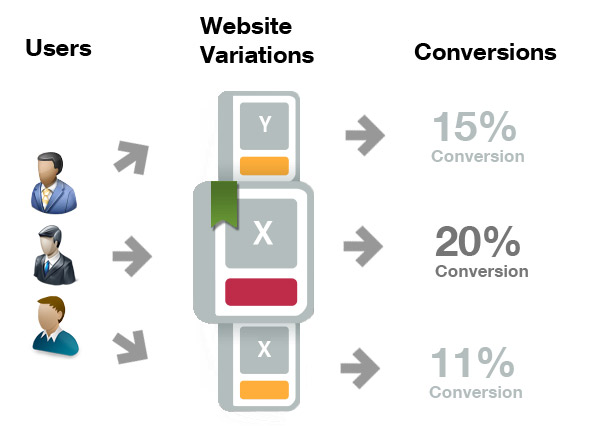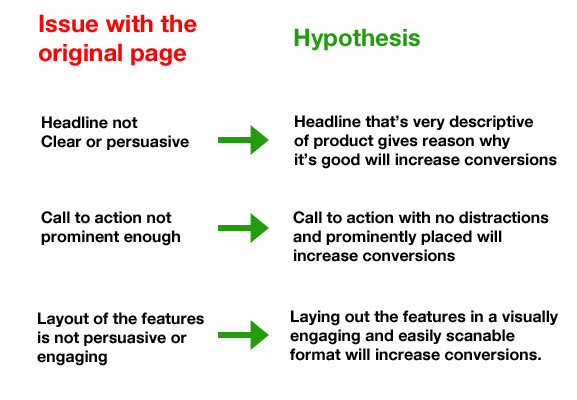A/B and Multivariate webpage tests are techniques for testing hypothesis on page variations which seek to improve the conversion rate of landing pages, microsites and websites.

It’s important when approaching these tests to have a clear process in place to ensure effective, consistent and insightful results.
Our process
1. Identify issues with the current page
In order to generate hypothesis which seek to improve conversion rate it’s important to identify conversion obstacles with the original page. The best way to approach this is to use a set of criteria to methodically determine issues with the page.
– Is the content clear and relevant? Is it persuasive?
– Does it adequately address potential anxieties a user might have about converting? Does it incorporate reassurances and credibility indicators, which increase trust? Is the website giving the right perception of the company?
– Is usability optimal? Is the interface as engaging as it could be? Is there anything distracting the user from converting?
– Is there enough urgency being created on the page to spur the user into converting NOW, and not later?
Highlight all aspects of the webpage(s) that don’t match up to the criteria. Take note of every issue you feel the page has.
2. Create hypotheses
Generate hypotheses to test based on the issues you’ve highlighted. Where possible base the solutions to the issues on research or approaches that have been successful in tests in the past. Where this isn’t possible, use your best judgement and be creative in the solutions you come up with.
A basic example would be:

Once you have generated a range of hypotheses, evaluate them to ensure they have value for a test.
Are they testable? Are there any technical practicalities with implementation, or potential design issues to consider before moving forward?
Is the main goal of the hypothesis to improve conversion rate by overcoming specific conversion obstacles? i.e. not just random design variations that have little basis.
Will the results from the hypothesis give you good marketing insights that could be beneficial in a follow up test?
3. Document the test
Write up the test in an official document to formalise what has been agreed. This should include:
– Test structure i.e. a/b or mv and goals
– Hypotheses
– Wireframes of variations with any new proposed copy
This is a very important part of the process. It ensures everyone involved in the test is on board, and allows for any feedback people have.
4. Design
It’s vital design work doesn’t commence until all the above steps are fully completed. This ensures the test is strategy led, and not design led, and significantly increases the likelihood the test will have a positive outcome on the conversion rate, and will guarantee to at the very least give valuable marketing insights for a follow up test.
It’s important the design sticks to what was agreed at wireframe stage, and stays true to the hypotheses. This should always be the basis for any feedback on the design.
5. Technical install and launch
This should be routine web development, implementing the html and other scripts into the testing platform. Major testing platforms include Omniture, Visual Website Optimizer and LiveBall. The free Google Website Optimiser will be put into retirement at the end of the month (1st August, 2012), and will be replaced with ‘Content Experiments’ via Google Analytics.
6. Analysis
By rigidly following the process outlined above, you should get consistently positive results from your tests, and see a solid improvement in conversion rates.

Regardless of whether the variations create an improvement in conversion rate, or prove to be inconclusive. Valuable marketing insights can be gleaned from the results of variations. These learnings can then be used to create follow up tests that are better informed, with a stronger basis for hypothesis.
If you’re interested improving the conversion rate of your landing pages, microsites or website by multivariate testing, contact us today to find out how we can help.


